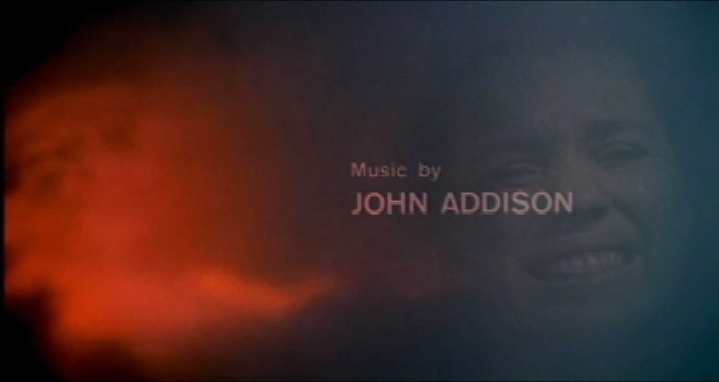Michael Armstrong vs. James Bond
That Arresting Rhythm:
- John Barry
- John Addison and Bernard Herrmann
- "A Visual Torn Curtain": Opening Credits
- The Murders
"A Visual Torn Curtain": Music and Image in the Opening Credits
Both From Russia With Love and Torn Curtain use the opening credits to create an important initial impression of the film, but both credit sequences work in very differeent ways. In Torn Curtain, visually, the split screen of the credits, with flames on the left side and faces in the smoke on the right, creates a vertical split, a “visual torn curtain." Furthermore, the identification of these clouded faces taken out of context and the interpretation of their meaning depends upon the following narrative and creates for the viewer and the characters important moments of recognition within the film 47.
Musically, Hitchcock stressed the need for the title sequence to be
“an exciting, arresting and rhythmic piece of music whose function would be to immediately rivet the audience’s attention”
the way the Bond title music does 48. Addison's score begins with a rhythmic beat played out by a xylophone and subtle percussion before giving way to the Escape Theme in brass that dominates the rest of the credit sequence. This is the theme heard again when Michael and Sarah are escaping on the bus from Leipzig to East Berlin and so just as meaning must be ascribed to the faces after viewing the film, the recognition of this theme can only be gained once the viewer has reached the last third of the film. However, the loose feeling given to the theme toward the middle of the sequence when it is played on a lone saxophone seems to take away from the tension visible in the faces on the screen; suspense is sacrificed for a recognizable tune. Toward the end of the credits, around the time that writer Brian Moore and director Alfred Hitchcock's titles appear on screen, a more rhythmic undertone re-appears in the music, similar to the opening rhythmic feel. This drum beat continues, after all the other instruments have faded out, to the opening shot of the ship in Norway, thus carrying this last-minute tension into the opening scene of the frozen, empty deck, and the silent physicists conference.
Herrmann’s score, on the other hand, involves a “leaping dissonant horn fanfare” and a “spiraling flute chromatic” that create an aural contrast similar to the visual contrast on the screen 49. The contrast of brass to winds seems to match the visual contras of fire and smoke, the winds representing the smoke and the brass the fire. Furthermore, the score is compiled of short repeating, often dissonant phrases. The dissonance matches the strained faces while the refusal of the phrases to settle into a theme increases the sense of tension. Just as the images are unsettling because they are out of context and without meaning, the music is unsettling because it has no stable resting place and so also seems without a comfortable context. The sequence ends oddly, however, with a cadence and a major chord resolution, perhaps paralleling the film’s overall progression and hinting at the ultimate resolution of the couple.
